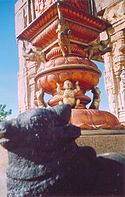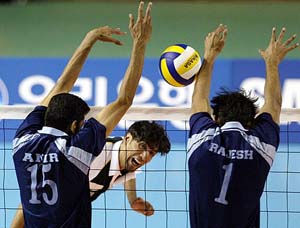The Param Vir Chakra: An ode to the bravest of all
 The Parama Vira Chakra (PVC) is India's highest military decoration awarded for the highest degree of valour or self-sacrifice in the presence of the enemy.The PVC was established on 26 January 1950 (the date of India becoming a republic), by the President of India, with effect from 15 August 1947 .It can be awarded to officers or enlisted personnel from all branches of the Indian military. It is the second highest award of the government of India after Bharat Ratna (amendment in the statute on 26 January 1980 resulted in this order of wearing). It replaced the former British colonial Victoria Cross (VC).
The Parama Vira Chakra (PVC) is India's highest military decoration awarded for the highest degree of valour or self-sacrifice in the presence of the enemy.The PVC was established on 26 January 1950 (the date of India becoming a republic), by the President of India, with effect from 15 August 1947 .It can be awarded to officers or enlisted personnel from all branches of the Indian military. It is the second highest award of the government of India after Bharat Ratna (amendment in the statute on 26 January 1980 resulted in this order of wearing). It replaced the former British colonial Victoria Cross (VC).

 Digboi is a town and a town area committee in Tinsukia district in the north-eastern part of the state of Assam, India.The town's history begins in 1867 when a small group of men from the Assam Railway and Trading Co. found their elephants' legs soaked in black mud, that smelt somewhat like oil. The men began exploring more, and in 1889, the English started a small oil installation. India (and Asia) obtained its first refinery in Digboi in the year 1901. Various web sites offer variations on the elephant’s foot story, a consensus of which would be that engineers extending the Dibru-Sadiya railway line to Ledo for the Assam Railways and Trading Company (AR&TC) in 1882 were using elephants for haulage and noticed that the mud on one pachyderm’s feet smelled of oil. Retracing the trail of footprints, they found oil seeping to the surface. One of the engineers, the Englishman (not Canadian) Willie Leova Lake, was an ‘oil enthusiast’ and persuaded the company to drill a well.
Digboi is a town and a town area committee in Tinsukia district in the north-eastern part of the state of Assam, India.The town's history begins in 1867 when a small group of men from the Assam Railway and Trading Co. found their elephants' legs soaked in black mud, that smelt somewhat like oil. The men began exploring more, and in 1889, the English started a small oil installation. India (and Asia) obtained its first refinery in Digboi in the year 1901. Various web sites offer variations on the elephant’s foot story, a consensus of which would be that engineers extending the Dibru-Sadiya railway line to Ledo for the Assam Railways and Trading Company (AR&TC) in 1882 were using elephants for haulage and noticed that the mud on one pachyderm’s feet smelled of oil. Retracing the trail of footprints, they found oil seeping to the surface. One of the engineers, the Englishman (not Canadian) Willie Leova Lake, was an ‘oil enthusiast’ and persuaded the company to drill a well.
 The Brihadeswara temple is on
The Brihadeswara temple is on . The game of Volleyball was brought to India more than 70 years ago when some Physical Education teachers who had been abroad, were trained in different games including Volleyball. Y.M.C.A., College of Physical Education, Madras took this game seriously and started training of Volleyball in The students trained here took the sport to other parts of the country. The formation of V.F.I. has been one of the main factors in the development and popularization of the game of Volleyball in India.
. The game of Volleyball was brought to India more than 70 years ago when some Physical Education teachers who had been abroad, were trained in different games including Volleyball. Y.M.C.A., College of Physical Education, Madras took this game seriously and started training of Volleyball in The students trained here took the sport to other parts of the country. The formation of V.F.I. has been one of the main factors in the development and popularization of the game of Volleyball in India.